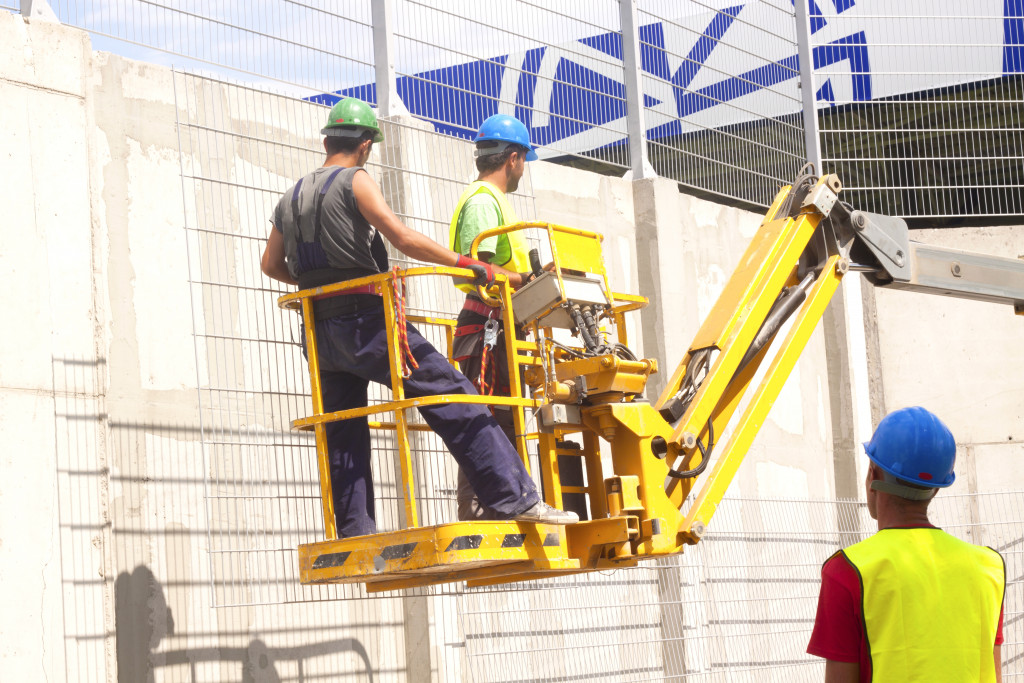2021 is anticipated to be the year of resumption and progress in the construction and rental industries after a turbulent year of modification of forecasts and changing expectations. The COVID-19 pandemic has changed the construction sector’s business, from project planning to hiring staff for customer relations. Increasing construction costs and labor constraints push the industry to create new ideas, with stricter regulations leading to fewer errors and waste. The epidemic will affect many future industrial advances.
Fortunately, new technologies continually transform the site and increase business margins. As the construction industry becomes more competitive, any building or leasing firm will profit from these construction trends. Let’s examine some of the most notable trends that are currently shaping the construction industry today.
Advanced Protective Equipment
COVID-19 impacted the building industry considerably, with state regulations emphasizing cleanliness and strict safety measures affecting the worksite and business standards. The business is also seeing a rise in the number of equipment to identify and remove common safety issues at once. Working boots that connect to the internet and alert people if a worker has fallen, material transporting heavy stuff, and robots that automatically build scaffolding are some of the wearable technologies that make their way to the workplace.
These robots change the jobs humans perform – in most cases, to improve human decisions (e.g., understanding and translating data finds into usable knowledge) and providing room for higher-level professions.
Application of Technology for Efficiency
This year, building technology — especially improvements that may increase efficiency — is the most significant difference between business owners and fleet managers. The COVID-19 epidemic is increasingly dependent on the technology of buildings, which is projected to expand significantly by 2021 and beyond. For example, intelligent contracts offer a standard structure for all businesses involved in a project, allowing them to monitor and pay for the services.
Instead of getting contracts and watching deliverables from multiple parties, business owners may use smart connections as an all-in-one monitoring system that blockchain sets and enforces standards and schedules. This solution will lead to faster closures, more security, better project monitoring, and an integrated distribution network.
Growing Need for Workers

A massive rise in demand for work is one of the most apparent building developments in recent years. Quality work, however, is costly and competitive. We will need more skilled employees to handle and analyze new technology-generated data. Fortunately, women play a more competitive role. The Bureau of Labor Statistics has shown that women hold just 10.9% of positions in the building sector. Still, trends in the recruitment of industries indicate a 94% increase for female construction companies from 2007 to 2018.
Furthermore, in 2018, 30% of construction firms elevated a woman to a senior position. Generation Z, born between 1995 and 2010, is likewise the industry’s focus for recruitment efforts. In the past, the unfavorable views of trade schools have adversely affected attempts to recruit fresh building talent. The epidemic of COVID-19 prompted a change in ideas about alternatives to schooling. It has improved favorable views towards business schools, site, and construction companies to demonstrate their industry’s professional development potential and plenty of chances to experiment with new technology.
Remote Work
Cell applications in the construction field offer unparalleled workplace access, including real-time inspections, on-site accountability, and accurate measuring using a mobile phone camera. COVID-19 needed teams to continue working on equipment, customers, resources, sites, or other colleagues without physical access. Those without a full mobile connection will in the future have a competitive productivity and sales disadvantage.
Forward-looking firms, including respectable plastic molding companies, have gotten on the bandwagon to safeguard their workers without compromising productivity.
Use of Manage Software
Extensive project management software is essential for a competitive edge, a successful enterprise, and operating efficiency improvement. While each Software Program has different capabilities and services, the best address the end-to-end needs such as RFIs, data compilation, remote team file sharing, finance, records administration, compensation, human resources, and inventory monitoring.
Your business must choose the finest software for building management. Start with usability and compatibility with other existing apps. Look for extendable software that will help you manage your needs in the future.
Business owners can minimize risk, gain more consumers, and increase profitability by implementing new processes, using new technology, and investing in new initiatives. As we all know, 2020 was a statistical aberration in the building sector, but the prognosis for the future is mainly favorable. Following a sluggish year, the industry is anticipated to pick up in 2021 as the US economy rebounds from the epidemic and new economic hubs emerge and expand.



